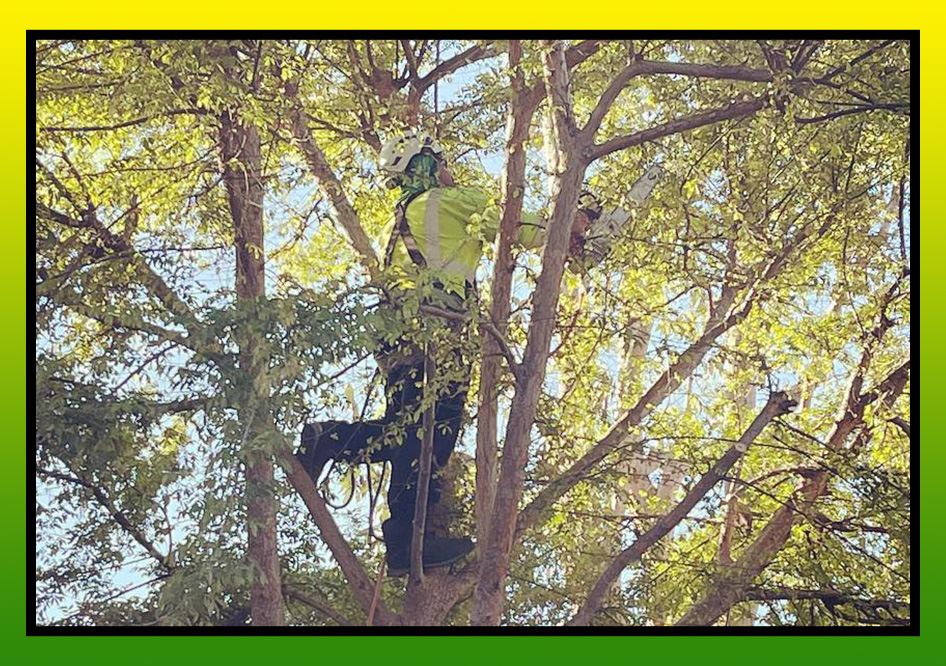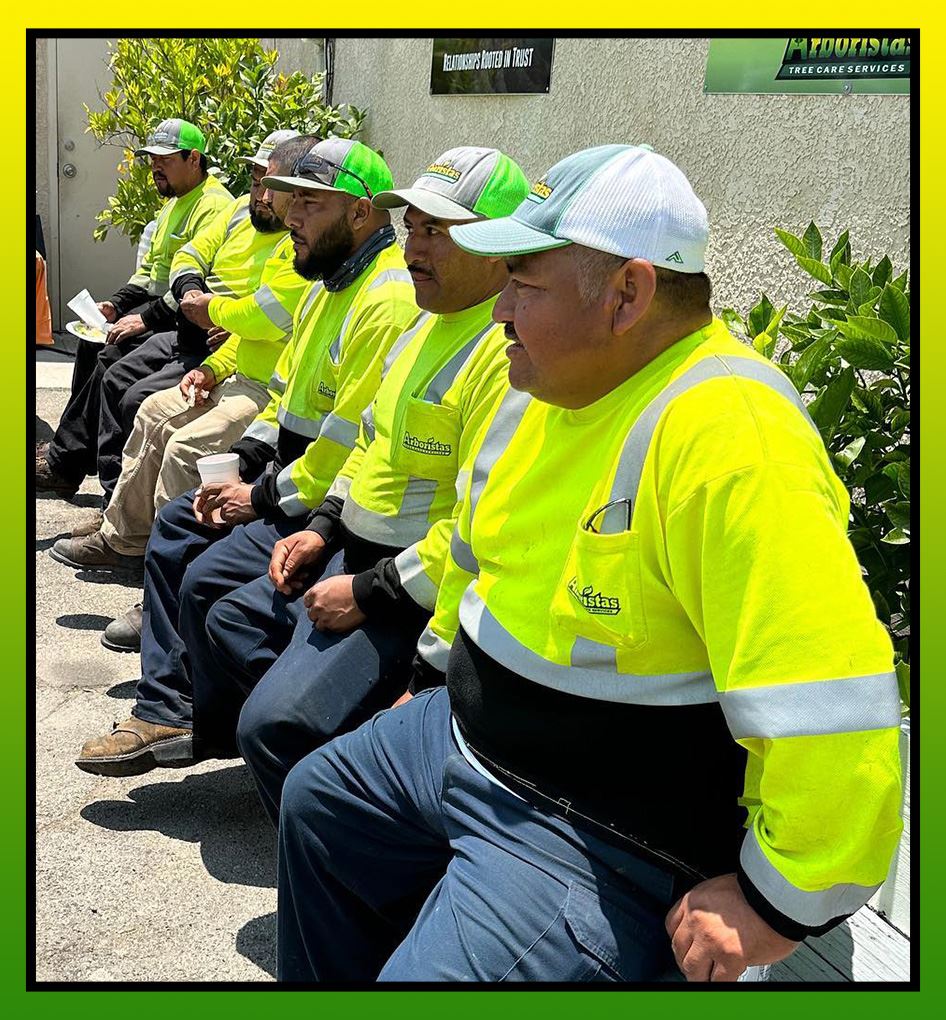A member of our team will be in touch shortly to confirm your contact details or address questions you may have.

Tree & Stump Removal in Santa Clarita
Residential & Commercial Landscaping & Tree Care in Los Angeles & Ventura Counties
Tree removal is arguably the most dangerous task in our industry. To safely remove a tree requires a great deal of training and years of experience. Most importantly, it requires strict adherence to all industry safety standards. Here at Arboristas, we are highly trained in the practice of tree removal and tree cutting. We have the expertise, experience, and working knowledge necessary to handle any tree removal project in Los Angeles County, Orange County, Riverside County and the counties of Inland Empire, Antelope Valley, Kern, Ventura and Santa Barbara.
Simply removing a tree, however, is not good enough. Throughout the process we do our best to cause as little disturbance to your property as possible. In addition, we thoroughly clean up after each project. We know that you spend time and money to keep your property looking beautiful, which is why our goal is to leave it looking as good or better than it did before we began.
Because of the complexity, risk, and cost involved with tree removal, it is always worth considering possible alternative tree care options. See our Tree Care page for more information.
There are a number of common situations where tree removal is usually necessary. Here are some of them:
Dead trees are dangerous and should be removed immediately. Dead trees will drop branches and are more susceptible to falling in a storm. Thus they pose a threat to your property and personal well-being.
Dying trees can often be cured through root collar excavation, soil management, pest and disease control, and other tree care services. But in the event that this is not possible, it is better to remove the tree sooner rather than later.
A tree with heavy damage may be at risk of dying. If it cannot be healed, the damaged tree should be cut down.
Leans, hollow spots, and weak root bases are just a few of the indicators of a potentially hazardous tree. Such trees should be carefully evaluated by one of our ISA Certified Arborists. If you have a tree that truly poses a threat that cannot be mitigated except through removal, it should be cut down.
Trees that are too close to houses and other structures, or certain species of trees planted in the wrong location, are all candidates for removal. Trees of this nature pose threats during hurricanes, tornadoes, strong thunderstorms, and during ice and snow accumulation. They can also cause damage to foundations, lift sidewalks, lead to mildew on siding, rub paint off structures, clog gutters with leaves, provide a path for squirrels to get into your home or business, and much more.
If you are adding an addition to your house, expanding the parking lot at your place of business, or beginning any number of other construction or landscaping projects, tree removal is often a must in order to create open space.
Cutting down select trees, removing problematic trees, and cleaning up existing trees can greatly enhance the overall beauty of your property and increase its value.
So whether you have a simple tree removal task or a complex, multi-day project, contact Arboristas today for a free estimate! We will send one of our ISA Certified Arborists to meet with you in order to determine which trees need to be removed and to help formulate the best plan of action.
Tree Removal & Tree Cutting Service Areas:
Most areas of Southern California including Los Angeles County, Orange County, Riverside County and the counties of Inland Empire, Antelope Valley, Kern, Ventura and Santa Barbara.
Why Choose Arboristas?
Serving Santa Clarita, CA Since 2017
-
Free Estimates Available
-
Customer Care Focused
-
Honest & Transparent
-
Full Landscaping Services
-
Licensed & Insured
-
Emergency Services Available

Our FAQ
Have questions? We are here to help. Still have questions or can't find the answer you need? Give us a call at 844-551-7133 today!
-
What does “stump grinding” mean?Stump grinding is the removal of the tree trunk down to 7″ to 8″ below the soil’s surface and the removal of any visible or surface roots which is common with Cottonwoods and Oaks. When you consider tree and stump removal, you have to think about how deep the root system goes into the ground. For sure, your best option is to have our team of professionals come out to handle your problem. Arboristas has state-of-the-art equipment designed specifically for these situations, and we can answer all questions and concerns you might have, and no job is too big. Our fully insured team can plan, schedule, manage and execute the safe and tidy removal of multiple stumps either pre-construction or old stumps without damaging the existing landscape. We take great pride in our work and can ensure each and every job is done with care not to damage any existing features and in a timely manner. We are happy to provide estimates before starting any work.
-
Why do you remove the tree?As Arborists, our goal is always to save the tree first, after we have exhausted all of our resources, removal is our last alternative. As Arborists, we are here to preserve the trees and if it is determined it is best to remove a tree, there has to be a very strong why As always, we will give you our expert advice based on our years of experience. We want to remove it if the tree is posing a safety hazard, for instance if the tree is leaning and is threatening coming down on people, vehicles, a house or other building. If the tree is creating trip hazards we will evaluate if a root prune is possible before we recommend removal. Obviously there is not one answer for all situations, at Arboristas, we do our best to preserve your trees.
-
Why would you prune a tree?Pruning a tree is for the tree’s health. Removing specific branches or stems can benefit the whole tree. Pruning stimulates new growth and removes any crossover branches that if not taken care of could eventually fuse together. Pruning is also recommended to remove any deadwood or branches in the canopy to prevent them from falling onto people or structures. Pruning stimulates new growth and removes any crossover branches that if not taken care of could eventually fuse together. Pruning is also recommended to remove any deadwood or branches in the canopy to prevent them from falling onto people or structures. Remove dead, damaged and diseased branches also helps prevent insect & decay organisms from entering the tree. Thinning a dense canopy on a tree will increase air and sunlight, resulting in fewer disease problems. A tree also needs to be pruned early in it’s development to make sure it’s structurally sound in the future. Many people think that young trees don’t require any pruning because the tree is young, but it’s the complete opposite. If you want to have a good tree in the future you want to start training it while it’s young removing cross branches and structuring the crown.
-
What’s the best time of the season to fertilize?Trees require nutrients to live and thrive. A fertilization program is used to maintain trees and shrubs in a vigorous condition and to increase their resistance to injury from diseases and insects. Most trees experience a single flush of growth during spring followed by slower growth throughout the summer and fall. Because of this single flush of growth, late winter or early spring is ideal. When the tree is getting ready to leaf out and grow, this is when you want the roots to absorb the good fertilizer and take it to the crown of the tree. The best indicator of whether fertilization is necessary is a soil test. Remember that plant nutrition is a balancing act and that too much fertilizer, as well as too little, can negatively affect the growth and well being of your trees and lawn. The correct amount will keep trees healthy and enhance landscape beauty.
-
Can I make my tree smaller?Yes, however, its dependent on the species. For instance, the pine species don’t come back as quickly as other species do. We ask that you consult us so our experts can evaluate the tree’s health, age and species to give you an accurate idea of what can be done to reduce the size of your tree. To get further details on your specific tree, contact us.
-
When is the best time to prune trees?Most people think that winter is the best time to prune trees, however, that depends on the species of the tree and the result that you want. For instance, any tree that blooms in the spring or summer, you may want wait until the tree is dormant. If it is cleaning it up, or as we call it, structural pruning, this can be determined with further information. We ask that you call us and make an appointment for a free estimate.